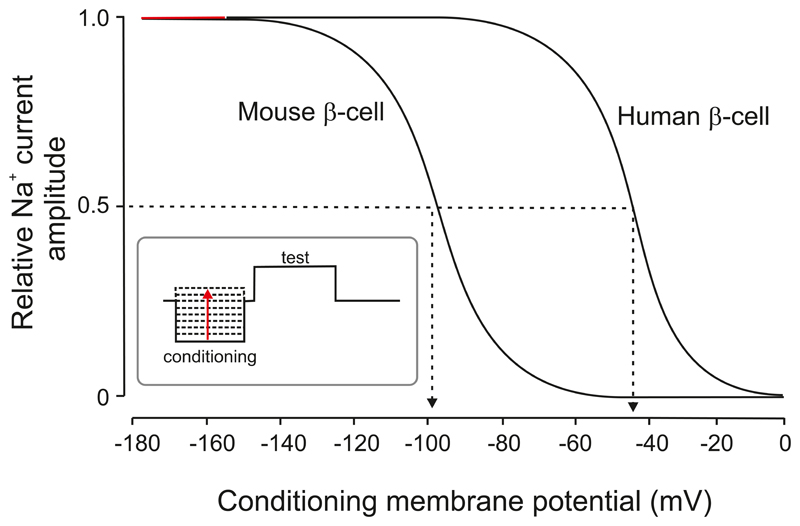Figure 10.
Steady-state voltage-dependent inactivation of Na+ channels in mouse and human β-cells. This was analyzed by a two-pulse protocol (inset) in which a test pulse to zero mV (to maximally activate the Na+ channels) was preceded by a conditioning depolarization (50-100 ms) to various membrane potentials. During the conditioning pulse, the Na+ channels undergo voltage-dependent activation: the more depolarized the conditioning voltage, the fewer the Na+ channels that remain to be activated by the test pulse. This gives rise to a sigmoidal relationship between membrane potential and the peak current during the test pulse that describes the voltage-dependence of inactivation. In human β-cells, inactivation of the principal Na+ current component is half-maximal at -45 mV (arrowed). The corresponding value in mouse β-cells is 50-60 mV more negative (~-100 mV, arrowed). Modified from (90, 221).

